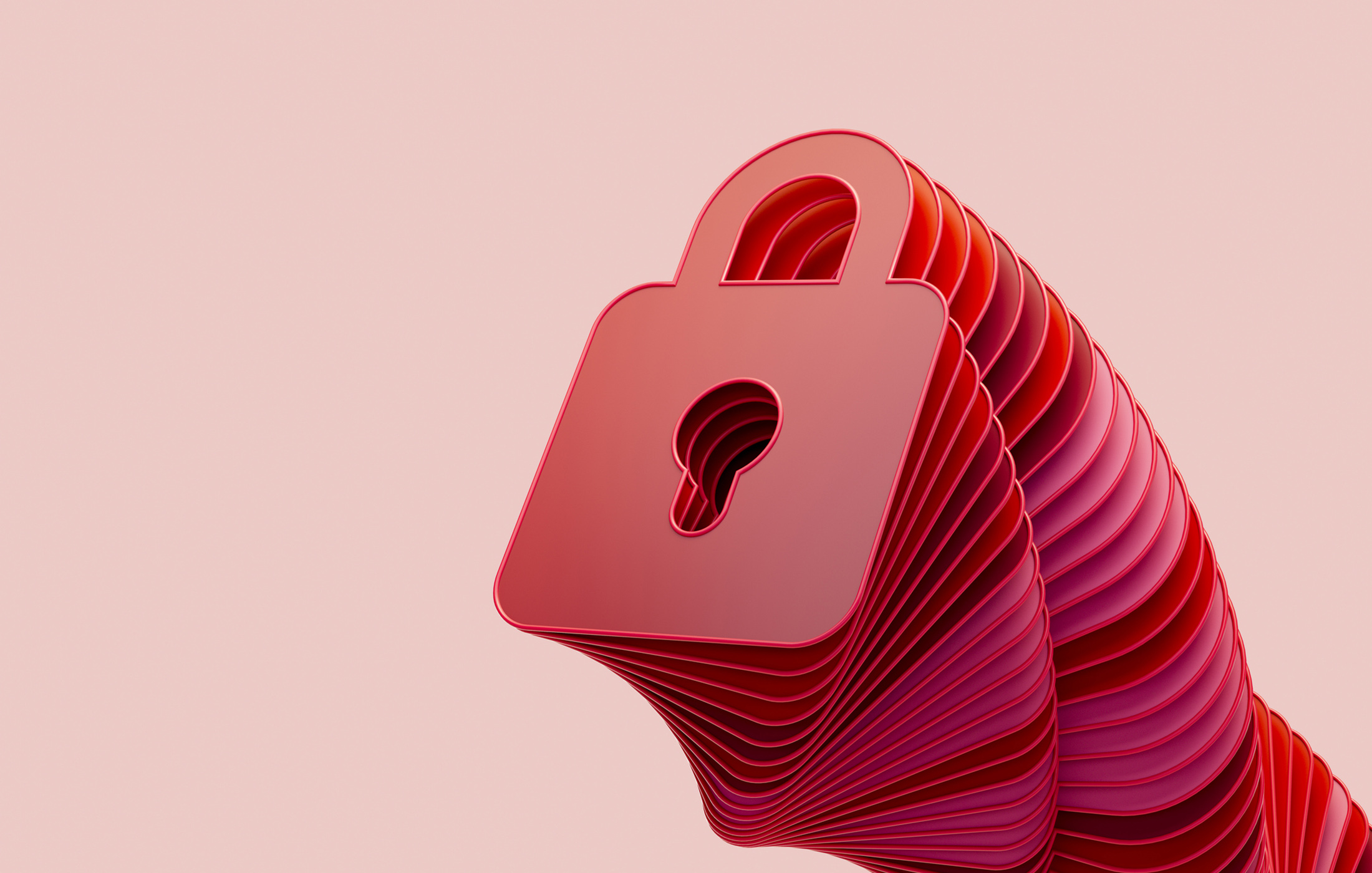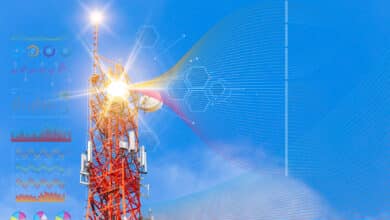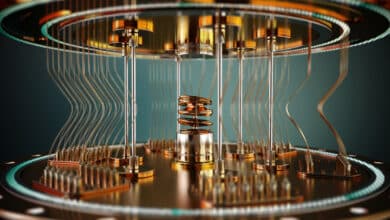NIST PQC Security Strength Categories (1–5) Explained

Table of Contents
Understanding NIST’s PQC Security Categories
As part of its post-quantum cryptography (PQC) standardization, NIST introduced five security strength categories (often labeled Levels 1-5) to classify the robustness of candidate algorithms. Each category represents a minimum security level that a PQC algorithm’s cryptanalysis should require, defined by comparison to a well-understood “reference” problem in classical cryptography. In simpler terms, NIST set floors for security: if a PQC scheme claims to meet Category X, it should be at least as hard to break as solving a certain reference problem (like brute-forcing a key of a certain size or finding a hash collision). This approach avoids over-reliance on precise bit estimates (which are uncertain in the quantum era) and instead uses broad tiers of strength. The goals are to ensure apples-to-apples comparisons between algorithms, guide prudent key size transitions over time, and help designers choose appropriate symmetric primitives inside their schemes.
What do the Categories mean? NIST’s five PQC security categories are defined in order of increasing strength. Below is a summary of each category and its reference baseline:
- Category 1: Must resist attacks at least as hard as breaking AES-128 by exhaustive key search (trying $$2^{128}$$ possibilities). This roughly corresponds to a classical security strength of ~128 bits.
- Category 2: Must resist attacks at least as hard as finding a collision in SHA-256 (finding any two different inputs with the same 256-bit hash). This is also about a 128-bit level of difficulty in classical terms (since a brute-force collision search is ~$$2^{128}$$ operations), but it targets a different type of problem (hash collisions instead of key search).
- Category 3: Must resist attacks at least as hard as breaking AES-192 by exhaustive key search (~$$2^{192}$$ possibilities), i.e. ~192-bit security.
- Category 4: Must resist attacks at least as hard as finding a collision in SHA-384 (a 384-bit hash, requiring ~$$2^{192}$$ operations classically for a collision).
- Category 5: Must resist attacks at least as hard as breaking AES-256 by exhaustive key search (~$$2^{256}$$ possibilities), i.e. ~256-bit security.
NIST chose these particular reference points because they align with the security of well-vetted symmetric primitives (AES block ciphers and SHA family hash functions) that are believed to remain robust even against quantum attacks. By defining categories in terms of known hardness benchmarks, NIST provides confidence that a PQC algorithm in (say) Category 3 will be at least as hard to break as AES-192 is by any known means.
Mapping PQC Categories to Traditional Security Strengths
One useful way to interpret the categories is by comparing them to traditional cryptographic strengths – for example, the familiar “bits of security” notion used for symmetric keys, and equivalent key sizes in classical public-key systems like RSA and elliptic curve cryptography (ECC). Table 1 below summarizes how each NIST PQC category maps to an approximate symmetric security level and to common classical algorithms of comparable strength, along with the reference problem defining that category.
| Category | Symmetric Security (bits) | Classical Public-Key Equivalent† (RSA/ECC) | Reference Attack (baseline) |
|---|---|---|---|
| 1 | ~128-bit (e.g. AES-128) | RSA-3072; ECC P-256 (approx. 256-bit curve) | Key search on a 128-bit block cipher |
| 2 | ~128-bit (collision context) | – See note [1] | Collision search on a 256-bit hash |
| 3 | ~192-bit (e.g. AES-192) | RSA-7680; ECC P-384 (384-bit curve) | Key search on a 192-bit block cipher |
| 4 | ~192-bit (collision context) | – See note [1] | Collision search on a 384-bit hash |
| 5 | ~256-bit (e.g. AES-256) | RSA-15360; ECC P-521 (521-bit prime curve ~256-bit sec) | Key search on a 256-bit block cipher |
Table 1: NIST PQC Security Categories and Classical Equivalents
† These RSA and ECC key sizes are commonly cited benchmarks for equivalent classical security. For instance, breaking AES-128 (128-bit key) is considered roughly as hard as factoring a 3072-bit RSA key or solving the elliptic curve discrete log on a 256-bit NIST curve.
[1]: Categories 2 and 4 target hash collision resistance at the 128-bit and 192-bit levels, respectively, rather than a symmetric key search. This distinction exists because certain attacks (especially on digital signatures or hash-based designs) are limited by how hard it is to find any two inputs with the same hash output, as opposed to guessing a specific secret key. NIST treated collision search separately to ensure such scenarios are covered. Notably, NIST assumes the ordering 1 < 2 < 3 < 4 < 5 in strength; for example, a brute-force collision on SHA-256 (Category 2) is expected to become feasible sooner than a brute-force key search on AES-192 (Category 3).
In Table 1, “Symmetric Security (bits)” refers to the idealized work factor in powers of two (i.e. bits of security). For example, ~128-bit means an attacker would need on the order of $$2^{128}$$ operations to succeed (using the best known attacks). Classical Public-Key Equivalent gives a sense of what RSA or ECC key sizes provide a comparable level of security. These mappings come from established NIST guidance and industry practice: e.g., 128-bit security is achieved by AES-128 and also by RSA with a 3072-bit modulus or by ECC using a 256-bit curve like P-256. Similarly, ~192-bit security corresponds to RSA ~7680-bit or ECC P-384, and ~256-bit to RSA ~15360-bit or ECC P-521. (In general, RSA and finite-field cryptosystems require much larger key sizes to match the exponential security of symmetric algorithms, whereas elliptic curves are far more efficient, needing roughly twice the security strength in bits for the curve order.)
The Reference Attack column in the table highlights the specific baseline problem that defines each category. Categories 1, 3, and 5 are anchored to block cipher key search of various key lengths (128, 192, 256), while Categories 2 and 4 are anchored to hash collision problems (SHA-256 and SHA-384 respectively). In practice, a PQC scheme assigned to Category 1 must withstand any cryptanalysis attempt as well as (or better than) an AES-128 key could withstand exhaustive search. Likewise, a Category 5 algorithm should be as hard to break as trying to brute-force AES-256, and so on.
Why did NIST include both key search and hash collision references at similar bit levels (e.g. 128-bit key vs 128-bit collision)? The reason is that these represent different attack modalities that can dominate in different contexts. Breaking encryption often boils down to finding a specific secret key (a key search or key recovery attack), whereas breaking a digital signature might boil down to finding any two inputs that produce the same output (a collision-style attack, e.g. forging a signature by producing a collision in the message hash). By having separate categories for each type, NIST ensures that proposals are evaluated against the worst relevant threat for their use-case. A hash-based signature scheme, for instance, might easily resist key search but could fail if hash collisions are easier to find; Category 2 and 4 set a clear bar for those cases.
How Quantum Attacks Shape These Categories
A critical aspect of NIST’s categorization is accounting for quantum attacks – especially algorithms like Grover’s and the overall constraints of quantum computing (such as gate depth limitations). The category definitions deliberately use problems (AES key search, hash collisions) that are believed to retain high security against quantum adversaries, albeit with some caveats. Here’s how quantum considerations influence the categories:
Grover’s Algorithm and Key Search
Grover’s quantum algorithm can quadratically speed up brute-force search. In theory, it could find a 128-bit AES key in ~$$2^{64}$$ quantum steps instead of $$2^{128}$$ classical steps. This might imply that a scheme equivalent to AES-128 could be weaker in a quantum world.
However, NIST’s analysis points out that Grover’s advantage is limited by practical constraints. Grover’s algorithm requires a long serial computation (deep quantum circuit) to reach that quadratic speedup, which is hard to achieve in reality. Attackers can parallelize multiple smaller quantum searches, but doing so dramatically raises the resource requirements, blunting the advantage.
As a result, Categories 1, 3, and 5 (the ones based on AES key search) actually provide a larger quantum safety margin than a naïve sqrt(·) estimate would suggest. For example, one NIST estimate is that breaking AES-128 via Grover might require on the order of $$2^{170}$$ quantum gates if run serially. Executing this requires either an unrealistically deep serial circuit or enormous quantum parallelism to reduce the runtime. The upshot is that a Category 1 algorithm isn’t trivially breakable by a quantum computer; it’s designed to endure the best practical quantum attack we can foresee.
Hash Collisions and Quantum Speedups
Finding collisions in a hash function can also be accelerated by quantum algorithms, notably the Brassard-Høyer-Tapp (BHT) algorithm. Classically, finding a collision in an $$n$$-bit hash costs ~$$2^{n/2}$$ steps (birthday paradox); BHT showed a quantum method to solve the collision problem in roughly $$O(2^{n/3})$$ steps. In concrete terms, for a 256-bit hash like SHA-256, the classical ~$$2^{128}$$ collision workfactor could theoretically be reduced to on the order of $$2^{85}$$ quantum steps – a significant speedup.
This is exactly why Category 2 is defined using SHA-256 collisions. While the theoretical complexity is reduced to ~$$2^{85}$$ steps, NIST assesses that the practical cost of this quantum attack (which requires massive quantum memory) remains extremely high. Category 2 sets the baseline that a PQC scheme must be at least as costly to break as the reference cost for breaking SHA-256.
Similarly, Category 4 (SHA-384 collisions) corresponds to ~192-bit classical collision resistance (and ~128-bit theoretical quantum resistance), guarding against any future quantum shortcuts in finding collisions.
It’s worth noting that quantum collision-finding is more complex and less dramatic than Grover’s straightforward key search speedup, but NIST wanted to cover that angle explicitly. By having those collision-based categories, NIST ensures that PQC digital signature algorithms (and others) that rely on hash functions are held to an appropriately high standard. (Indeed, NIST footnotes that in any reasonable future scenario, a SHA-256 collision attack would still be easier than breaking AES-192, which justifies Category 2 being the lower tier before Category 3.)
Gate Depth Limits and Cost Models
NIST also introduced the concept of a maximum feasible quantum circuit depth (sometimes called MAXDEPTH) to model real-world limits on quantum computation. The idea is that there’s a limit to how many serial gate operations a quantum computer can perform before decoherence or time constraints intervene. Plausible values discussed ranged from about $$2^{40}$$ up to $$2^{96}$$ logical operations. Within such bounds, an attacker cannot just run an arbitrarily long quantum algorithm – they’d have to restructure the attack into parallel chunks if it exceeds the depth limit. This consideration further protects categories 1/3/5: an attack like Grover’s on AES-256 (Category 5) would require an astronomically large circuit depth, forcing adversaries to cut corners or use massive parallelism.
NIST’s security categories account for these realities by requiring that any feasible quantum attack still meets the category threshold in terms of resources. In practice, NIST evaluates attacks on proposed algorithms across multiple metrics – number of quantum gates, circuit depth, classical operations, etc. – and the algorithm only qualifies for a category if all these metrics indicate it’s at least as hard as the reference brute-force task. They even assign a higher “cost” to quantum operations relative to classical ones (acknowledging that today a quantum gate might be billions of times more expensive than a classical gate), though they caution that this gap could narrow in the future and thus consider worst-case scenarios where quantum is highly optimized.
In summary, the categories are designed to be quantum-aware benchmarks. The chosen reference problems (AES and SHA) are ones where we fairly well-understand the best quantum attack costs. By pegging category requirements to those, NIST indirectly bakes in known quantum algorithm impacts. For instance, a PQC KEM in Category 1 should not have a quantum attack that runs faster than Grover would break AES-128 under realistic constraints – otherwise it would be failing its category. This approach lends confidence that a “Category 3” scheme will truly offer ~192-bit security even in the face of quantum computers, barring some breakthrough algorithm that outperforms Grover or BHT on the scheme’s specific math (an uncertainty NIST openly acknowledges).
Choosing Levels for Real-World Deployments
Finally, how do these security levels guide practitioners? In planning for a post-quantum world, security architects and protocol designers can use NIST’s categories much like they used classical security levels in the past. Here are a few key points for real-world deployment and migration:
Matching Current Security Posture
Organizations should choose PQC algorithms at a category commensurate with the security of the systems they are replacing. For example, if you currently rely on AES-128 and RSA-3072 (≈128-bit security), a Category 1 or 2 post-quantum algorithm would be the minimal equivalent target. If you use RSA-2048 today (about 112-bit security, now considered legacy-strength), you’d also migrate to at least Category 1 as an improvement. On the other hand, systems protecting very high-value or long-lived data (which might have used AES-192 or RSA-4096/P-384) should consider Category 3 or higher to retain a comparable or greater margin of safety. Systems currently relying on AES-256 should target Category 5.
Performance vs. Security Trade-offs
Higher category algorithms typically have larger keys, ciphertexts, or signatures and/or slower performance, since they carry a higher security overhead. NIST explicitly recommended that submitters focus on Categories 1, 2, and 3, as those “are likely to provide sufficient security for the foreseeable future” and offer a good balance of security and efficiency.
Categories 4 and 5 were meant as future-proofing options – NIST suggested having at least one parameter set at a substantially higher level to hedge against unexpected cryptanalytic or quantum breakthroughs.
In practice, many PQC finalists (like lattice-based schemes) came with multiple parameter sets (e.g. a “Level 1” version for general use and a “Level 3” version for extra security) to let implementers choose according to their needs.
Protocol Profiles and Compliance
Standards bodies and governments will likely mandate specific categories for certain applications. For instance, government Top Secret communications might eventually require Category 5 algorithms (analogous to how Suite B once mandated AES-256 and P-384 ECC for highest classification). A more common scenario is that protocols like TLS, IPsec, and PKI will set a baseline (e.g. “PQC algorithms used must meet at least Category 1”) to ensure no component falls below the required strength.
We may see compliance profiles such as “Category 3 or higher for banking and finance” to provide a safety margin. By using NIST’s categories as a common yardstick, interoperability is improved: if two parties agree on using a Category 3 KEM, they can each select an algorithm (or parameter set) that meets that category, knowing both options are intended to be equivalent in security.
Future Transitions
The category framework will also guide when to move to stronger parameters. Just as NIST periodically raises minimum key sizes (e.g. deprecating 80-bit and 112-bit security in the past), these PQC categories give a structured ladder for the future. If, for example, there’s a major advance in quantum computing making 128-bit search significantly easier, the industry could respond by moving from Category 1 to Category 3 algorithms for new deployments. The clear-cut nature of the categories (“128-bit”, “192-bit”, etc.) makes such communication straightforward. It’s a form of future-proofing: start with what you need, and know there are higher levels available if threat models evolve.
In conclusion, NIST’s PQC security levels serve as a crucial bridge between the well-understood world of classical crypto strength and the uncharted territory of quantum-resistant cryptography. They translate abstract post-quantum schemes into familiar security benchmarks – AES and SHA – that developers and policymakers can reason about. By grounding each category in concrete reference problems and accounting for quantum cost nuances, NIST has provided a confident, citation-backed way to ensure that as we adopt PQC algorithms, we maintain the security assumptions that our digital infrastructure relies on. This categorical framework will guide everything from algorithm selection to protocol design, ensuring that the eventual migration to post-quantum cryptography is both prudent and transparent in terms of security levels.
Quantum Upside & Quantum Risk - Handled
My company - Applied Quantum - helps governments, enterprises, and investors prepare for both the upside and the risk of quantum technologies. We deliver concise board and investor briefings; demystify quantum computing, sensing, and communications; craft national and corporate strategies to capture advantage; and turn plans into delivery. We help you mitigate the cquantum risk by executing crypto‑inventory, crypto‑agility implementation, PQC migration, and broader defenses against the quantum threat. We run vendor due diligence, proof‑of‑value pilots, standards and policy alignment, workforce training, and procurement support, then oversee implementation across your organization. Contact me if you want help.



